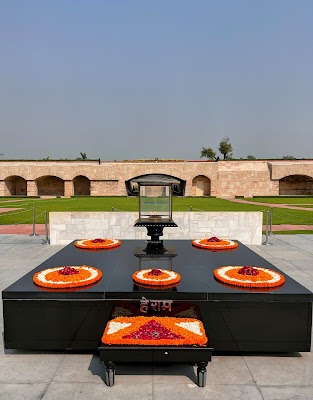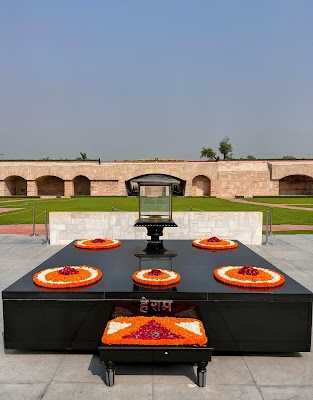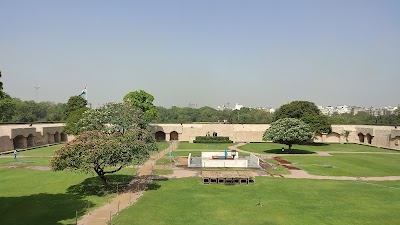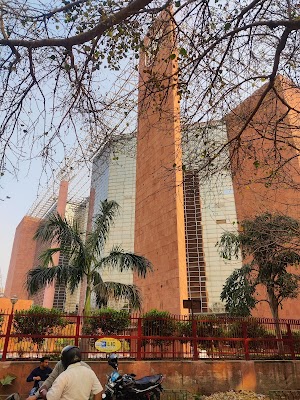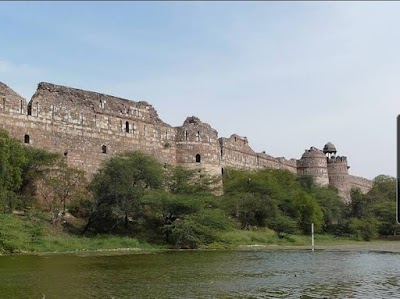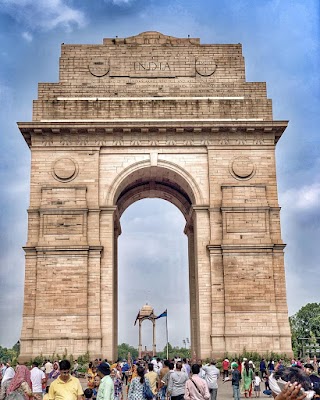Raj Ghat (राज घाट)
Overview
**Raj Ghat: A Serene Tribute to Mahatma Gandhi**
Nestled along the banks of the Yamuna River in New Delhi, India, **Raj Ghat** is a tranquil memorial dedicated to Mahatma Gandhi, the principal architect of India’s independence movement. This sacred site serves as a powerful reminder of Gandhi's philosophy of non-violence and his lasting influence on the world.
The history of Raj Ghat is deeply intertwined with the events of January 31, 1948, when Mahatma Gandhi was cremated following his tragic assassination. Recognizing the significance of the site, it was transformed into a memorial that invites visitors from around the globe to pay their respects and reflect on Gandhi's monumental contributions to humanity. The term "Raj Ghat" carries historical significance, stemming from an earlier area known as Raj Ghat Gate, which once existed in the walled city of Shahjahanabad, now referred to as Old Delhi.
As you enter the Raj Ghat complex, you are welcomed by a vast garden that radiates peace and serenity. The meticulously maintained lawns, adorned with trees and vibrant flowering plants, create an inviting atmosphere for introspection. In stark contrast to the lively city around it, the memorial's calm ambiance encourages a profound sense of reverence and contemplation.
At the heart of Raj Ghat lies a simple yet striking black marble platform that marks the precise location of Gandhi’s cremation. This platform features the inscription "Hey Ram," famously believed to be Gandhi's last words. Nearby, an eternal flame burns brightly, symbolizing the everlasting nature of Gandhi’s ideals. The minimalistic design of the memorial reflects Gandhi's own values of simplicity and humility.
One of the unique features of Raj Ghat is its accessibility and the contemplative space it offers. Many visitors, especially those from abroad, are often moved by the contrast between the memorial's tranquility and the vibrant energy of New Delhi. This location serves as a perfect setting for reflection, deepening visitors’ understanding of Gandhi's teachings on peace, forgiveness, and non-violent resistance.
Adjacent to the main memorial, you'll find several smaller tributes honoring other significant figures in India’s freedom struggle. Memorials dedicated to Jawaharlal Nehru, India’s first Prime Minister; Lal Bahadur Shastri, the second Prime Minister; and Indira Gandhi, the first woman Prime Minister, enrich the visitor experience by providing a broader historical context.
Raj Ghat is not merely a site of remembrance; it is also a source of inspiration and education. Within the complex lies the **Gandhi Smriti Museum**, a small museum dedicated to Mahatma Gandhi. This museum showcases a wealth of artifacts, photographs, and documents related to Gandhi’s life and work, offering deeper insights into his personal and public endeavors. Interactive exhibits and audiovisual presentations make the educational experience engaging for visitors of all ages.
For those keen on cultural experiences, Raj Ghat often hosts commemorative events, particularly on October 2nd, Gandhi’s birth anniversary, known as **Gandhi Jayanti**. On this day, dignitaries and citizens gather to pay their respects, participate in prayer meetings, and recite Gandhi's favorite hymns. These occasions provide a unique opportunity for tourists to witness Indian culture and traditions while participating in a global tribute to a universally revered leader.
In recent years, Raj Ghat has embraced technology to enhance the visitor experience. Audio guides are available in multiple languages, offering comprehensive insights about the site and Gandhi’s life in an accessible format for international tourists. These guides allow visitors to explore at their own pace, ensuring a personalized and enriching experience.
Visiting Raj Ghat is a deeply moving experience that transcends cultural and national boundaries. It is a place where history and contemporary values converge, imparting lessons in peace, resilience, and the power of non-violent protest. As an enduring symbol of one man's monumental contribution to justice and equality, Raj Ghat stands as a beacon of hope and inspiration for all who visit.
In summary, Raj Ghat is more than just a memorial; it is a testament to the enduring principles of Mahatma Gandhi and their relevance in today’s world. For foreign tourists, a visit to Raj Ghat presents an opportunity to connect with India’s rich historical narrative, contemplate global principles of peace and non-violence, and gain a deeper understanding of one of the most influential figures of the 20th century. Whether you are a history aficionado, a cultural explorer, or simply seeking a moment of tranquility amidst the hustle and bustle of New Delhi, Raj Ghat promises an enriching and unforgettable experience.


